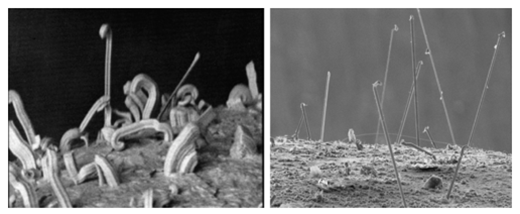 Thanks to that wonderful ROHS stuff the EU passed more than a decade ago, we should be seeing a few high-profile failures of electronic components due to tin whiskers. These tiny hair-like extrusions of metal found most commonly in lead-free solder have destroyed billion dollar satellites and shut down nuclear reactors, despite no one knowing exactly how these whiskers form. Now there’s a new theory of metal whisker formation (abstract, unless you have access to APS) that actually has predictive power. Here’s the free version of the paper
Thanks to that wonderful ROHS stuff the EU passed more than a decade ago, we should be seeing a few high-profile failures of electronic components due to tin whiskers. These tiny hair-like extrusions of metal found most commonly in lead-free solder have destroyed billion dollar satellites and shut down nuclear reactors, despite no one knowing exactly how these whiskers form. Now there’s a new theory of metal whisker formation (abstract, unless you have access to APS) that actually has predictive power. Here’s the free version of the paper
[V. G. Karpov] from the University of Toledo suggest these whiskers are formed by differences in charge induced by metallurgical anomalies – contamination, differences in the grain of the solder, and oxides. Because of the difference in charge, the whiskers are extruded, for lack of a better word, out from the surface of the solder.
The theory of whisker growth is generally consistent with observed rates of whisker growth and other properties. With this theory, it should even be possible to grow tin whiskers. Why anyone would want to do that other than, ‘because it’s cool’ is anyone’s guess, but there you go.










